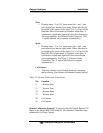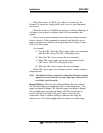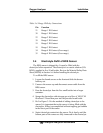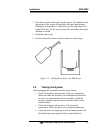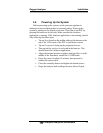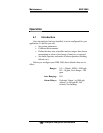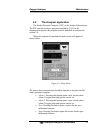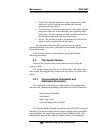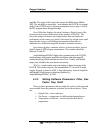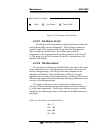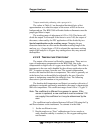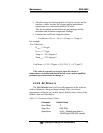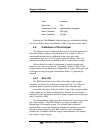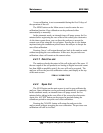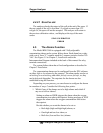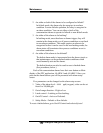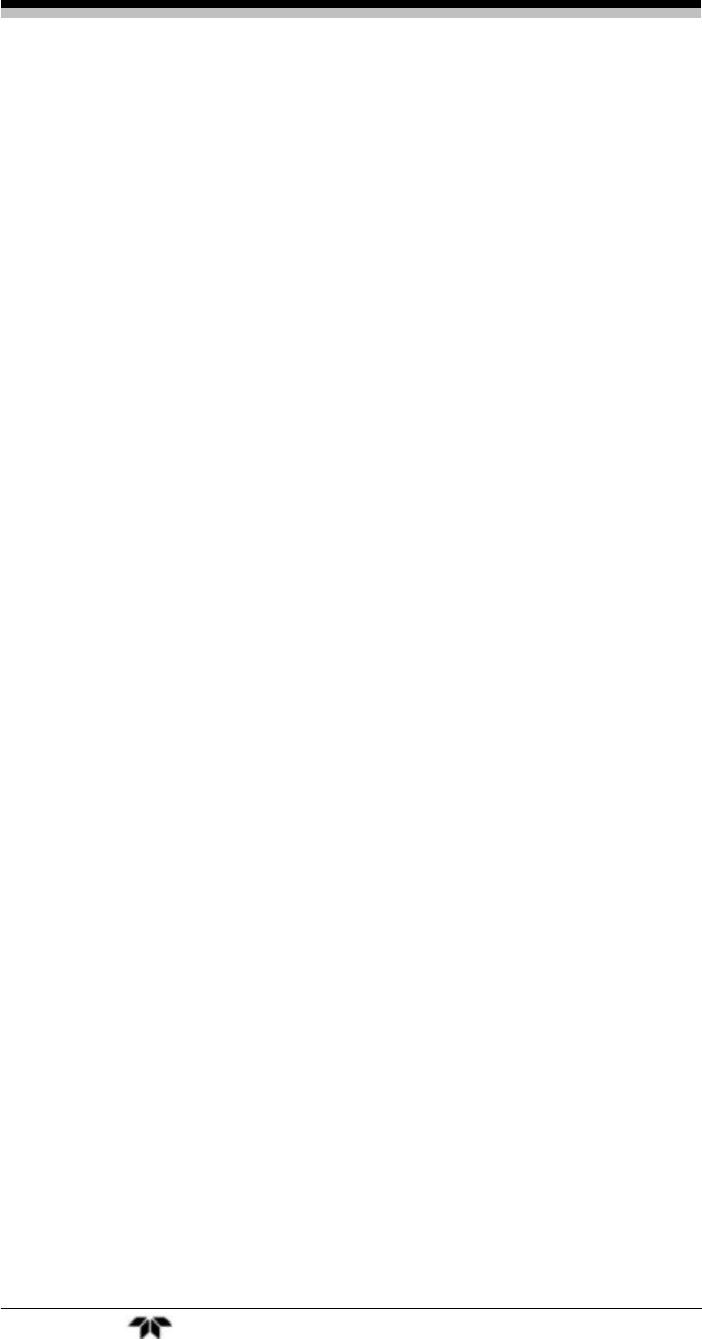
Oxygen Analyzer Maintenance
Teledyne Analytical Instruments 45
amplifier. The range of this count is the same as the BDS sensor, 0000 to
4095. The last digit is a status digit—zero indicates the I/O PCB is in normal
mode. If the I/O PCB receives a remote command to zero or span, it will let
the PPC program know through this digit.
Zero Offset line displays the actual Analog to Digital count of the
electronics plus sensor offset stored in the memory of the PPC. The
lower the number the better, but a high number does not hinder the
performance of the sensor very much. One reason for a high count could
mean that the sensor is still drifting downward and therefore an
additional zero calibration might be needed to maintain accuracy.
Span Factor displays a number which is a factor needed to convert
digital counts to PPB oxygen concentration. This number should be
between 10 and 40.
AmpGain/RangeID/DAC displays the command sent to the I/O PCB
and determines what gain the amplifier should have and what range ID
contact should open. Both numbers are from 0 to 4. Usually, with default
ranges, they should be the same but not necessarily.
DAC is a count number sent to the analog to digital converter of the
I/O PCB. This sets the output for the concentration 0-1 vdc and 4-20 madc
outputs. Its range is from 0 to 4095. A large discrepancy between AmpGain
and RangeID would point to a hardware problem e.g.:
AmpGain/RangeID/DAC: 0/4/265.
4.3.2 Setting Software Parameters: Filter, Gas
Factor, Tmp. Coeff.
There are three parameters that are under the control of the user and
are accessible from the parameter selection box as shown below. These
are:
• Digital filter—noise reduction
• Gas Factor—compensates for different background gases
• Temperature coefficient—corrects baseline drift due to
temperature.



